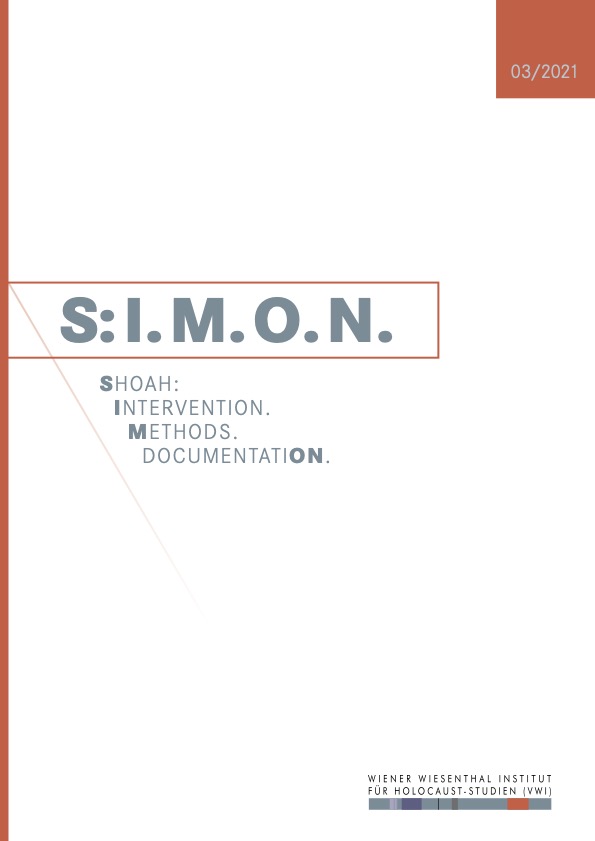Unwillingly on the Road: Forced Jewish Migration at the Municipal Level in Slovakia (1939-1945)
Unwillingly on the Road: Forced Jewish Migration at the Municipal Level in Slovakia (1939-1945)
Author(s): Michala LônčíkováSubject(s): Jewish studies, WW II and following years (1940 - 1949), Fascism, Nazism and WW II, History of the Holocaust, History of Antisemitism, Migration Studies
Published by: Wiener Wiesenthal Institut für Holocaust-Studien
Keywords: forced migration, Jewish apartments;Jewish space;Dispersed ghetto;Slovakia;
Summary/Abstract: Forced Jewish migration in the Slovak State (1939-1945) during World War II is usually seen from the perspective of the deportations to the Nazi concentration camps. In fact, unwilling migration trajectories of the persecuted Jews, even within the contemporary Slovak territory, were copying gradual development of the anti-Semitic policy and its direct consequences on the everyday Jewish life in the wartime period. Numerous members of the Jewish community had experienced forced – in some cases also multi-layered – displacement both at the municipal and inner-state level even before the first transport left from Slovakia to Auschwitz on 25th March 1942. Main aim of this paper is to analyse the trajectories of the forced Jewish migration at urban level, especially personal and spatial consequences of limiting the Jewish living space caused by the restriction to live in and rent apartments in designated zones such as in the localities re-named after Adolf Hitler and Andrej Hlinka, founder and first leader of the Hlinka’s Slovak People’s Party.
Journal: S:I.M.O.N. Shoah: Intervention. Methods. Documentation.
- Issue Year: 8/2021
- Issue No: 3
- Page Range: 20-32
- Page Count: 13
- Language: English

